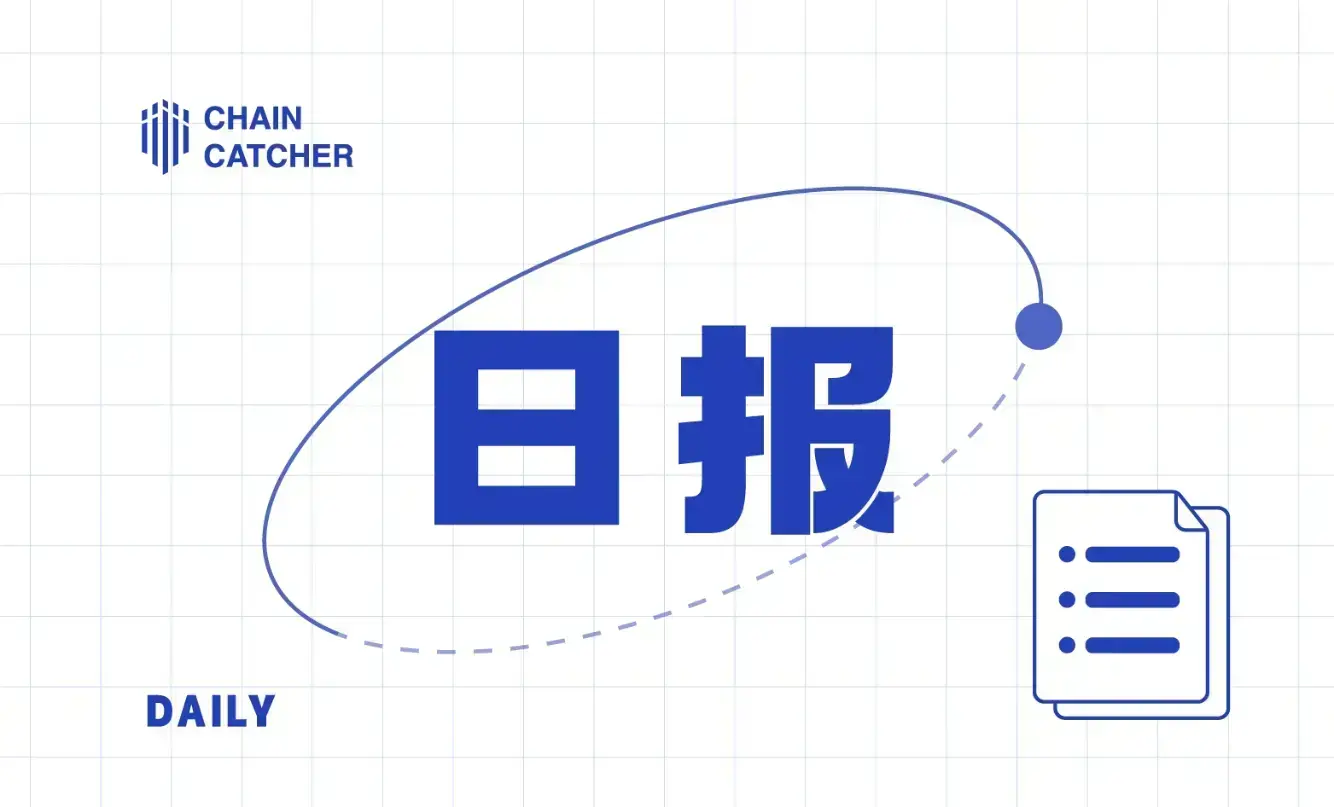Dialogue RootData List Listed Projects | Huma Finance Co-founder: Building the PayFi Network Faces Three Key Challenges
Interview: flowie, ChainCatcher
*Guest: Richard Liu, *Co-founder & Co-CEO of Huma Finance*
*Organizer: *flowie, ChainCatcher
*Editor's Note: During the "DeInsight 2024" annual summit co-hosted by the Web3 asset data platform RootData and ChainCatcher in Bangkok during Devcon, the * “RootData: 2024 Web3 Industry Development Research Report and Annual List”* was officially released (click the link to view the full report and list).*
*The report provides a detailed analysis and interpretation of the development characteristics of the Web3 venture capital market in 2024 and prominently releases the RootData List 2024. This list is the second annual selection launched by RootData following its first release in 2023, and its results are attracting more attention from entrepreneurs, investors, LPs, and general * Crypto enthusiasts.*
The RootData List 2024 includes five lists: Top 50 Projects (completed TGE), Top 50 Projects (not yet conducted TGE), Crypto VC Top 50 Investment Institutions, Top 10 Angel Investors, and Top 20 Best CEOs.
ChainCatcher will publish a series of articles, conversing with the projects and institutions listed on the RootData List 2024, seeking builders who navigate through bull and bear markets and tracking the latest trends in Web3.
Today's featured project, Huma Finance, was selected for the RootData List 2024 annual list "Top 50 Projects (not yet conducted TGE)."
As a highlight of the Solana ecosystem, PayFi is one of the hottest emerging concepts this year. The PayFi network built by Huma Finance is a leading PayFi use case in the Solana ecosystem.
Huma's PayFi network focuses on building a Payment Financing Layer, targeting the multi-trillion-dollar commercial payment, trade financing, and remittance scenarios.
Huma's current core application, Arf, addresses the issue of prepayments through blockchain and stablecoins, processing over $2 billion in on-chain transactions. According to Huma Finance co-founder & Co-CEO Richard Liu, it is expected to reach $3 billion by January.
The Huma Finance team has backgrounds from companies like Google and Meta. Richard Liu, an engineer by training, worked at Google for nearly eight years, contributing to the creation of well-known products such as Google Trusted Stores and Google Fi. His startup Leap.ai was acquired by Facebook (now Meta).
Later, while serving as CTO at the fintech company EarnIn, Richard Liu met the other two co-founders of Huma, Erbil and Ji, and together they founded Huma Finance in April 2022, completing a $8.3 million seed round of financing in May 2022.
In September of this year, Huma Finance also secured $38 million in funding led by Distributed Global, with participation from Hashkey Capital, Folio Ventures, Stellar Development Foundation, and TIBAS Ventures, the venture capital arm of Turkey's largest private bank, İşbank.

In this interview, Richard Liu shared his insights on the understanding of PayFi, the positioning of Huma Finance, key challenges in building the PayFi network, and strategic plans for 2025.
1. ChainCatcher: How do you understand the concept of PayFi, and how does it differ from past narratives of crypto payments/Web3 payments?
Richard Liu: The "Financing" in Payment Financing simply means being able to advance future money. For merchants, this means they can receive accounts receivable in advance as working capital. For individuals, it allows them to use future income to meet current needs.
Financing makes previously stagnant funds flow, becoming more flexible. PayFi uses blockchain technology to better provide payment financing services, which can either make existing payment financing more efficient or enable applications that traditional finance cannot support today, such as T+0.
Some friends say that PayFi only focuses on crypto payments, which I think is a significant misconception. While crypto payments will definitely expand in the future, it is still a small piece of the pie right now. Today, there is already a massive market for payment financing, such as the credit card payment market reaching $16 trillion and trade finance reaching $10 trillion. Huma is currently well-positioned in the cross-border payment financing business, which is a huge market of around $4 trillion.
The biggest opportunity for PayFi lies in how to apply blockchain and stablecoins to traditional payment financing, making it more efficient and convenient.
2. ChainCatcher: What specific PayFi scenarios does Huma focus on? What market pain points does it address?
Richard Liu: Huma can be seen as a network, with the core being our released PayFi Stack, which represents our understanding of the entire PayFi ecosystem. This ecosystem can be divided into several key layers from bottom to top:
The bottom layer is the Transaction Layer, composed of public chains, with Solana performing particularly well in this area, though it is not the only competitor among other early entrants.
The second layer is the Currency Layer, primarily consisting of various stablecoins that support the financial activities of the entire ecosystem.
The third layer is the Custody Layer, which becomes extremely important in payments, especially commercial payments. One aspect I am particularly interested in is Shared Custody, which greatly increases transaction speed by changing the status of fund controllers without moving funds from one account to another.
The fourth layer is the Compliance Layer, which is an indispensable part of the PayFi ecosystem; non-compliance will ultimately lead to failure.
Based on this, we further build the Financing Layer, allowing everyone to anticipate future cash flows and providing many opportunities for traditional finance to leverage blockchain, such as credit cards and financial management applications on-chain. We can build many applications on Huma Finance.

Currently, we are focusing on an application called Arf, which specializes in prepayment services for cross-border payments.
In traditional cross-border payments, transferring money from Singapore to Africa takes many days and incurs high fees. Payment companies typically need to have partners in the recipient country and advance funds equivalent to 20% to 25% of a month's transaction volume. As business expands, the demand for advances and the variety of currencies will increase, placing a heavy burden on payment companies.
Our platform solves this problem through the Arf application. We abstract all advances into a service and use stablecoins to complete instant transfers.
We conduct strict risk control assessments on licensed remittance companies we partner with. Once a partnership is established, we can provide advance services. When a remittance company receives a request from an end user (either B2B or B2C), it first transfers the received issued currency into a dedicated Safeguarding account and then requests an advance from Arf. Once Arf confirms that the funds are in the Safeguarding account, it will transfer stablecoins to the remittance company's partner at the destination based on demand. Once the partner receives the funds, they will disburse the money to the recipient and notify the sending payment company that the funds have been settled. At this point, the sending payment company can utilize the fiat currency in the Safeguarding account to deposit and return stablecoins to us.
The entire process takes 1 to 6 days, and all our partners are licensed financial institutions. Currently, we have processed over $2 billion in payment financing on-chain, with no credit defaults, and we expect to reach $3 billion by January.
3. ChainCatcher: What are the biggest challenges in building the PayFi network?
Richard Liu: I think there are several key points:
First, there must be a certain compliance framework to support the project's operation. For example, under the VQF compliance framework in Switzerland, we can use stablecoins to provide advance services to licensed financial institutions globally. We can only serve licensed financial institutions and cannot directly provide services to end merchants.
Second, the project requires substantial financial support.
The real explosion of PayFi projects needs funding support from traditional finance; relying solely on funds from the crypto space is insufficient. Today, while RWA and PayFi are hot topics, most people are just dipping their toes in the water, and very few institutions are actually diving in and swimming. A successful PayFi platform must establish cooperation with traditional financial institutions. We have made considerable progress in this area, but there is still a long way to go.
When funds on the platform come from different channels, a key issue is how to integrate these funds and set up a reasonable structure for risk control management. We need to ensure that different investors can invest in suitable tranches based on their risk preferences.
Finally, there is risk management. In the crypto space, risk control is extremely important. Overall risk management must be excellent; even if the project or company itself faces bankruptcy, users' investment funds should not be affected.
Many RWA or PayFi projects mistakenly view themselves as merely technical projects upon entry. In reality, risk control management is more important than technology. Financial risk control is also more important than technical risk control.
Traditional finance has different pricing for different risks and does not simply avoid bad debts. Unlike traditional finance, the crypto space is extremely sensitive to bad debts and defaults. Once there are any signs of default, investors will immediately close their positions and withdraw. Therefore, for PayFi projects at this stage, the focus should be on assets with relatively low risk, and the default rate should be as close to zero as possible. While no one can guarantee achieving this completely, we must strive to reach this goal.
4. ChainCatcher: As 2024 comes to an end, what strategic plans do you have for 2025?
Richard Liu: In 2024, our main task is to complete the acquisition of Arf and form a strategic partnership with Solana. Entering 2025, we have several important tasks:
First, to jointly promote education in the PayFi market with industry leaders. The PayFi Summit we successfully held with Solana in September will continue, with plans to hold six sessions next year, gradually expanding the scale and inviting more people and projects to participate in discussions.
Second, in terms of ecosystem growth, we will continue to deepen our layout in both DeFi and TradFi next year.
As a project that can generate healthy, high-yield RWA, we are very attractive to DeFi projects. They will be eager to integrate with us. We will become a part of the DeFi Lego, attracting more participants.
At the same time, we are also attracting traditional financial funds. Currently, several collaborations with traditional finance are underway, but full implementation will take time. Our capital turnover is rapid; we currently have over $20 million in our pool, which is expected to reach $60 million by the end of the year, and may reach $100 million in January or February. Our goal is to achieve at least $250 million next year. Due to our rapid capital turnover, with at least 50 transactions a year, we expect to complete at least $1 billion in online transactions next year.
While securing substantial funding, we must ensure efficient and low-risk deployment.
Third, to incubate more killer applications. In addition to Arf, we will continue to incubate a second and third project next year, aiming for them to deploy at least tens of millions of dollars. These applications can be ones we incubate ourselves or third-party projects.
5. ChainCatcher: Huma has always had a close partnership with the Solana ecosystem. What has been your biggest impression of collaborating within the Solana ecosystem?
Richard Liu: The biggest characteristic of Solana is that they do what they say.
For example, in marketing, we jointly promoted the PayFi Summit with Solana. Although Solana, as a giant company, usually has a larger voice, they did not act that way. Instead, they fully supported our work and mobilized a lot of resources to help us with the event.
The same goes for technical support. Our team's initial technical experience was mainly in EVM, and transitioning from EVM to Solana posed significant technical challenges due to the different design philosophies of the two chains.
Solana sent two top engineers to track our development process throughout. They not only provided various suggestions but also helped us avoid directional mistakes during development.
Liquidity is the most challenging issue for any RWA and PayFi project, and Solana has mobilized many ecosystem resources to assist us. A significant proportion of our LPs were introduced by Solana.
6. ChainCatcher: The Huma team's technical background was originally aligned with EVM. During this Ethereum Devcon, what are your thoughts on the widespread skepticism currently facing the Ethereum ecosystem?
Richard Liu: I come from a technical background, and looking at our team's past, EVM (Ethereum Virtual Machine) is indeed very compatible with us. However, I believe that the EVM ecosystem is not enough to be limited to technology; it needs to integrate technology with ecological products, especially more diverse products.
EVM reminds me of Google. Google was originally a company that focused heavily on technology, but its success lies in having both technology and excellent products. I hope to integrate more product thinking into the EVM space.








